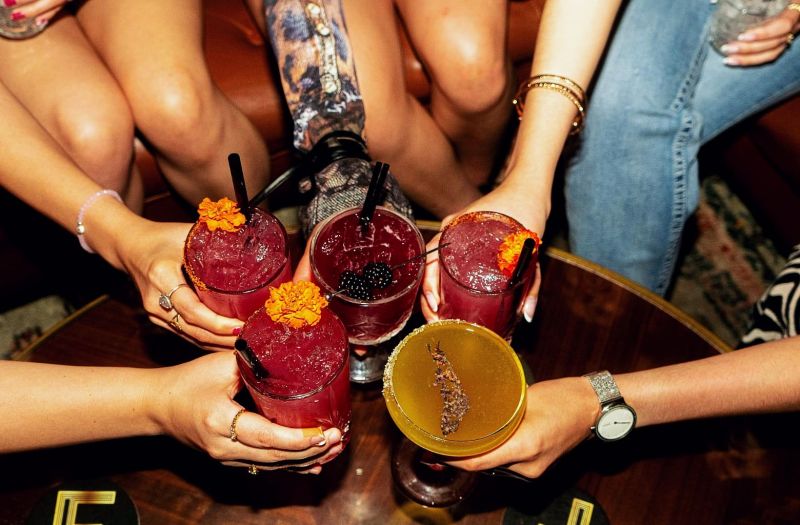Educating Bartenders Worldwide.
By Beverage Trade Network

For decades, bartenders and bar owners could count on a steady rhythm: happy hour crowds, late-night regulars, celebratory rounds, and seasonal spikes in consumption. But the drinking culture in the United States is changing—and fast. Moderation, once a fringe concept reserved for wellness circles, has now become mainstream. Movements like Dry January, Sober October, the “sober curious” lifestyle, and even more casual forms of moderation like “zebra striping” (alternating between alcoholic and non-alcoholic drinks) are reshaping how people interact with alcohol.
The pandemic acted as an accelerant in both directions. Initially, alcohol sales boomed as people stocked their home bars and sought comfort during lockdowns. But as restrictions lifted and the focus shifted back to health and well-being, consumers started cutting back—and not just temporarily. According to IWSR’s most recent No/Low Alcohol Strategic Study (Dec 2024), per capita consumption of pure alcohol across 10 major markets has fallen by 20% since 2000. Importantly, that decline doesn’t necessarily reflect abstinence; instead, it highlights a shift toward lower-ABV options, ready-to-drink formats, and no/low alternatives.
For bartenders, this isn’t a signal that the industry is shrinking—it’s an indication that the game is changing.
The incoming generations—Millennials and Gen Z—are particularly shaping this shift. They represent a customer base that is health-conscious, adventurous with flavor, and willing to spend more on premium experiences. But they’re also more likely than previous generations to say “not tonight” when it comes to drinking.
75% of Gen Z and 74% of Millennials report moderating their alcohol intake in the past six months. Comparatively, only 66% of Gen X and 55% of Boomers said the same.
These younger consumers don’t necessarily view moderation as abstinence. Instead, it’s situational—skipping weekday drinks, reserving alcohol for special occasions, or participating in trends like Dry January. They’re also highly receptive to no/low products that allow them to socialize at bars without the commitment of a high-ABV cocktail.
As Richard Halstead, COO Consumer Insights at IWSR, puts it: “Shrinking repertoires and an increased commitment to moderation are driving a decline in alcohol consumption for [Millennials]. Peer group behaviors now appear to be aligning more with the moderation trend.”
For bartenders, this translates into a changing “order book”: smaller rounds, more requests for non-alcoholic pairings, and a demand for balance in the cocktail list.
Several cultural and market forces are converging to make moderation more than just a passing fad:
Health and Wellness Priorities
Post-pandemic, wellness is no longer niche—it’s mainstream. Cutting back on alcohol is seen as a proactive way to support mental and physical health.
Cannabis Legalization
With cannabis products more widely available, some consumers are substituting alcohol with alternatives. This doesn’t necessarily spell doom for bars, but it does mean “recreational downtime” is no longer synonymous with “going out for drinks.”
The Rise of No/Low
From zero-proof spirits to kombucha-based mocktails, the no/low market is exploding. Consumers are more curious than ever about plant-based and functional beverages that give them an experience without the buzz.
Shifting Perceptions of Social Drinking
“Happy hour” isn’t disappearing—it’s just diversifying. A round of mocktails, a CBD spritzer, or a sessionable low-ABV beer is just as likely to be part of the evening as a classic martini.
Data shows that moderation isn’t just a Gen Z trend. Across North America, the proportion of light drinkers jumped from 39% to 44% in the past year. Globally, light drinking has inched upward from 33% in April 2023 to 37% in March 2025.
But the moderation strategies vary by age:
So, what does moderation mean for the bar world? Far from signaling the “end of drinking,” it opens up new creative possibilities. Here are some takeaways:
The numbers are clear: moderation isn’t a passing health trend—it’s an entrenched cultural shift. And while consumption levels may be falling, the opportunities for bars and bartenders aren’t disappearing. They’re evolving.
Today’s drinkers want choice, transparency, and experiences tailored to their values. Tomorrow’s successful bars will be those that see moderation not as a threat, but as a mandate to innovate.
In other words: moderation may be the future, but for bartenders, that future can be just as creative, profitable, and exciting as the past—if not more so.
Header image sourced from Unsplash.